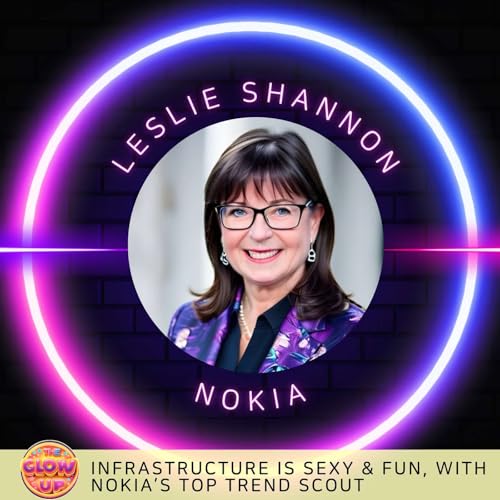Please join me in celebrating the 44th, and final episode of Season 1, with a very, very special guest. We'll be back soon with more stories of innovation and entrepreneurship from founders, CEO's and Product Leaders of disruptive and innovative products. - Nathan C.
Leslie Shannon, Head of Trend and Innovation Scouting at Nokia, reveals how a 160-year-old company continues to lead by relentlessly adapting, trend-spotting, and cultivating innovation.
From sawmills and rubber boots to Bell Labs AI and immersive virtual meeting agents, Leslie shows why the “pipes and infrastructure” backstage of global connectivity are more innovative—and more fun—than most people imagine.
Key Takeaways
- Reinvention DNA: Nokia constantly reinvents itself by leveraging core expertise, enabling pivots from sawmills to global telecom infrastructure and beyond.
- Enterprise Innovation: Leslie’s trend scouting bridges the worlds of customers, executives, and technologists by bringing outside insights directly into product and network strategies.
- AI With Safety Nets: Nokia’s unique approach to generative AI—using models for internal efficiency while assuring staff they’ll never be replaced by AI—demonstrates a future-forward, humane corporate playbook.
- Infrastructure as Opportunity: True innovation—whether in network tech, XR, or AI—is built on the patient, modular assembly of “building blocks” and is tested through customer feedback, not just internal enthusiasm.
- Tools for Human Collaboration: Shannon spotlights Arthur, a VR meeting tool with an AI moderator that streamlines feedback, crystallizes friction points, and helps teams focus on creative solutions instead of wasting time on consensus-building.
Leslie’s journey weaves together Nokia’s multi-generational legacy with modern foresight. She surfaces blind spots, diffuses hype with real customer needs, and ensures Nokia (and its customers) make bets that prepare them for what’s next, not just what’s now.
About Leslie Shannon
Leslie Shannon is the Head of Trend and Innovation Scouting for Nokia. A Silicon Valley-based futurist, she focuses on identifying connectivity-related tech disruptions and opportunities, including developments in robotics, drones, visual analytics, cloud gaming, generative AI, and especially augmented and virtual reality, the foundations of the Metaverse.
Leslie has a BA from the University of Virginia, a Master’s Degree from Yale University, and was a five-time champion on Jeopardy!. She does all her daily fitness work in virtual reality.
Leslie is the author of Interconnected Realities, a look at the current and future development of the Metaverse, and, with Catherine D. Henry, Virtual Natives, an examination of how Gen Z and Gen Alpha’s use of digital technologies is revolutionizing how humans relate to both computers and each other.
A "glow up" signifies a positive transformation, reflecting the journey of becoming a better, more successful version of oneself.
At The Tech Glow Up, we humanize the startup and innovation landscape by focusing on the essential aspects of the entrepreneurial journey. Groundbreaking ideas are often ahead of their time, making resilience and perseverance vital for founders and product leaders.
In our podcast, we engage with innovators to discuss their transformative ideas, the challenges they face, and how they create value for future success.
If you're a founder or product leader seeking your own glow up, or a seasoned entrepreneur with stories to share, we invite you to join our guest list via this link.
 30 m
30 m Nov 13 202534 m
Nov 13 202534 m Nov 10 202534 m
Nov 10 202534 m Nov 5 202546 m
Nov 5 202546 m 40 m
40 m Sep 12 202534 m
Sep 12 202534 m 37 m
37 m 38 m
38 m
